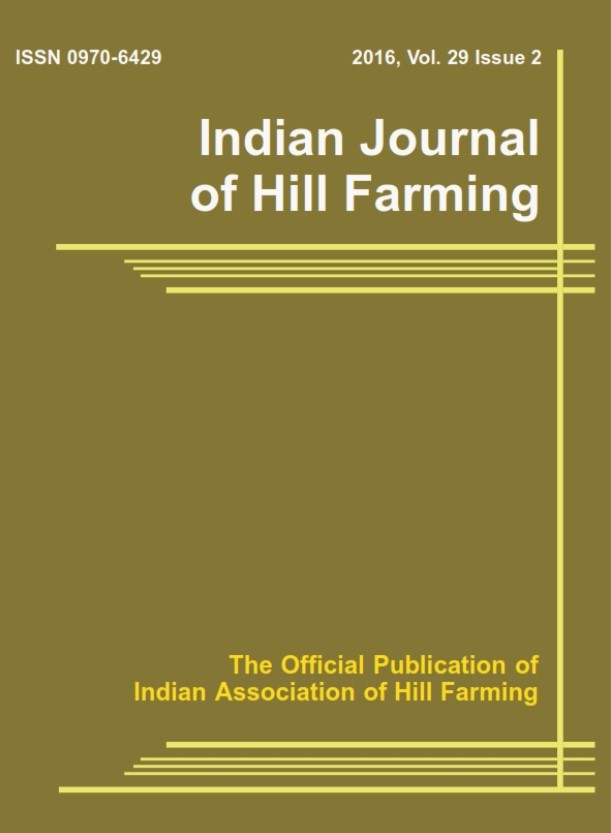Performance of Blackgram (Vigna mungo) cultivars grown during the pre-monsoon season in Meghalaya
DOI:
https://doi.org/10.56678/Keywords:
Blackgram, Sowing dates, Varieties, Yield, Physiological parameters and BCRAbstract
A field experiment was carried out during the pre-monsoon season of 2021 at the experimental farm of the College of Post-graduate Studies in Agricultural Sciences, Barapani (CAU-Imphal) to ascertain an optimum sowing period for blackgram cultivars. The field experiment was laid out in split plot design under recommended package of practices. The treatment consisted of three sowing dates, from last week of February, the first week of March, and the second week of March, which have been taken under the main plot treatment. Four blackgram varieties, viz., PU 1, PU 30, PU 31, and INDIRA, were taken under sub-plot treatment. Varietal significant differences were recorded for crop growth rate, relative growth rate, and net assimilation rate during the early growing stage of the crop. However, at a later stage, the difference was found to be non-significant. Sowing of PU-31 on the first week of March produced the highest grain, stover yield, harvest index, and benefit cost ratio among varieties i.e., 0.96, 2.52 t ha-1 , 27.62%, 1.84, and sowing dates 0.96, 2.42 t ha-1 , 28.48%, 1.87, respectively. Results suggested that sowing blackgram during the first week of March is profitable for getting a significantly higher grain yield and benefit-cost ratio under premonsoon conditions.Downloads
Published
2023-03-31
Issue
Section
Articles
License
Copyright (c) 2023 Pradosh Kumar Parida, Lala I.P. Ray, K. Sirisha, Vishram Ram, A.K. Singh, N.J. Singh (Author)

This work is licensed under a Creative Commons Attribution-NonCommercial-NoDerivatives 4.0 International License.
How to Cite
Performance of Blackgram (Vigna mungo) cultivars grown during the pre-monsoon season in
Meghalaya . (2023). Indian Journal of Hill Farming, 36(01), 219-226. https://doi.org/10.56678/




